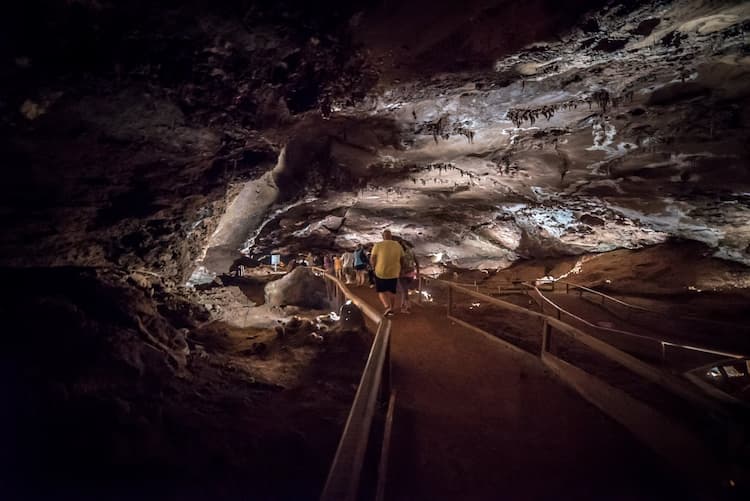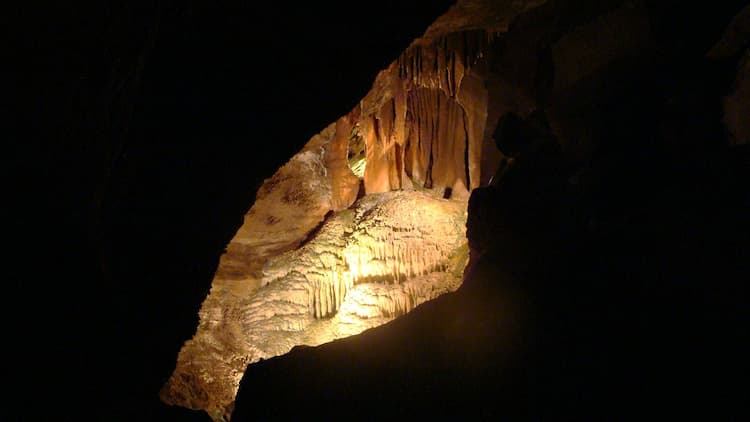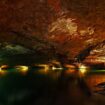
We are reader-supported and may earn a commission on purchases made through links in this article.
You may have completed trotting the entire globe, but there are still plenty of extraordinary places yet to discover, even for the well-trodden travelers. You just need to look under the earth’s surface to find them! One such natural marvel is located in the town of Sweetwater, Tennessee.
The town is home to The Lost Sea, the largest non-subglacial underground lake in America and the world’s second-largest one. Located in Craighead Cavern, deep beneath Tennessee, this underground water body is too large to be fully measured! And there’s a fantastic way to explore The Lost Sea for a once-in-a-lifetime underground adventure!
The Craighead Cavern
The Lost Sea is located in Tennessee, extending from Madisonville to Sweetwater amidst the Great Smoky Mountains. Along with the underground lake, the Craighead Cavern is also home to some of the most impressive geological structures in the country.
It’s known for its spectacular array of stalagmites, stalactites, and crystals, decorating the caves’ limestone walls. For its beauty and long history, the National Park Service considers this extensive and historic cave system a ‘National Natural Landmark.’
Evidence shows that long before humans came into this earth, fearsome giant Pleistocene jaguars used to roam the cavern. Centuries later, the Cherokee tribe used it as shelter, as proved by the arrowheads, weapons, jewelry, pottery, and other various Native American artifacts discovered in the caves.
Throughout the centuries, the cavern was used as food storage, a hideout, and was mined too for saltpeter for making gunpowder. On a wall of the cavern, you can see the date 1863. Proved to be authentic by carbon testing, the date was possibly put there from the carbon of a Confederate soldier’s torch.

The Lost Sea
The extensive cave network of the Craighead Cavern holds within the giant lake with still, calm, and crystal-clear water. The underground lake was discovered quite surprisingly in 1905, when a kid accidentally stumbled across the water while playing in the cave.
13-year-old Ben Sands crawled 40 feet through a tiny muddy tunnel in the cave, suddenly dropped down into the lake, and waded out into knee-deep water. The lake was visibly way smaller when discovered, but the scientists and geologists have been carrying on the discovery and blasted it out.

As for now, nobody is quite sure about the sheer size of the lake. Just like the dry caves, the underwater sections also are angled down very sharply, making it hard to measure the exact depth of the water. The visible portion of the lake is 800 feet long and 220 feet wide.
But there are several large water-filled halls beneath the surface, most of which are yet to be explored. Almost 13 acres of water is mapped so far. Divers and explorers fathom over 100 feet of depth just nearby the shore and are still searching to find a definitive end of the colossal water body.
Sitting deep in the foothills of the Smoky Mountains and 140 feet below ground, this American wonder of the mysterious underground lake in Tennessee certainly continues to intrigue all!
The Guided Tours
There’s no surprise that The Lost Sea attracts over 1000 visitors a day! Though you can’t possibly dream of readily diving in the underground lake, you can very easily get aboard a striking electric motor-powdered glass-bottomed boat to explore it.
‘The Lost Sea Adventure’ provides daily guided tours to the cavern and The Lost Sea. After a 75-mile walk on wide sloping pathways across the caverns to the lake, the 75-minute boating rides around almost 4 acres of water.
The temperature in the cavern is a constant 58 degrees with very high humidity. Sandals, flip-flops, backless shoes, and heels are not advisable. The lake stocks some of the country’s largest rainbow trout, though fishing is not permitted on the site.
Guides are there to provide interesting anecdotes and the colorful history of the cave and to point out gorgeous formations named ‘anthodites’ or in popular terms, ‘cave flowers.’ These fragile spiky clusters are found in only a few of the caves in the world, in such abundance.
Actually, the Craighead Cavern contains the world’s 50% of this rare formation. If you want to add some extra excitement, choose the Wild Cave group tour, where you’ll be exploring undeveloped cave rooms by crawling and wiggling through cracks, crevices, nooks, and crannies.
Just don’t forget to ditch your shorts and put on long trousers! While enjoying the breathtaking underground scene and taking note of all the fascinating information, don’t forget to look below through the glassed bottom of the boat! You may find something surprising lurking beneath! As we said earlier, it’s all about looking under!
Inspire your next adventure with our articles below:
Author Bio: Manali Saha is a researcher and writer by profession, as well as an enthusiastic traveler. Manali loves visiting, exploring, and writing about new places, people and culture.

